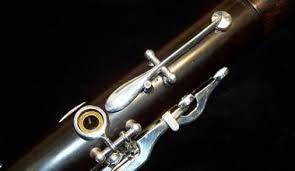
Clarinet Parents - Be Smarter Than Your 5th Grader - Speaker Key and other interesting facts
Share
The Speaker Key and the Bb Clarinet
The B-flat clarinet is an orchestral instrument going back to the time of Mozart and beyond. It is a transposing instrument, which means that the note heard is a major second below the note written on the page.
The B-flat clarinet has a small key on the back, just above the thumbhole. This key is generally referred to as the speaker key or octave key. It was first added by J.C. Denner (1655-1707). It allows the production of an extended scale. When the speaker key is opened, the same fingering (with of course, the addition of the speaker key) creates a much higher pitch with different harmonics. The different harmonics changes the timbre of the instrument substantially.
The clarinet is 0.67 meters long from the tip of the mouthpiece to its’ end. Sound is produced in the instrument by means of a single reed, which vibrates as the player blows into the mouthpiece. The reed is set against the mouthpiece and the player blows into the mouthpiece. Then keys are opened and or holes are closed to change the length of the pipe and thus change the pitch. The fundamental of the instrument is the low E at 245 Hz. Each note has other pitches that are produced, the overtones.

